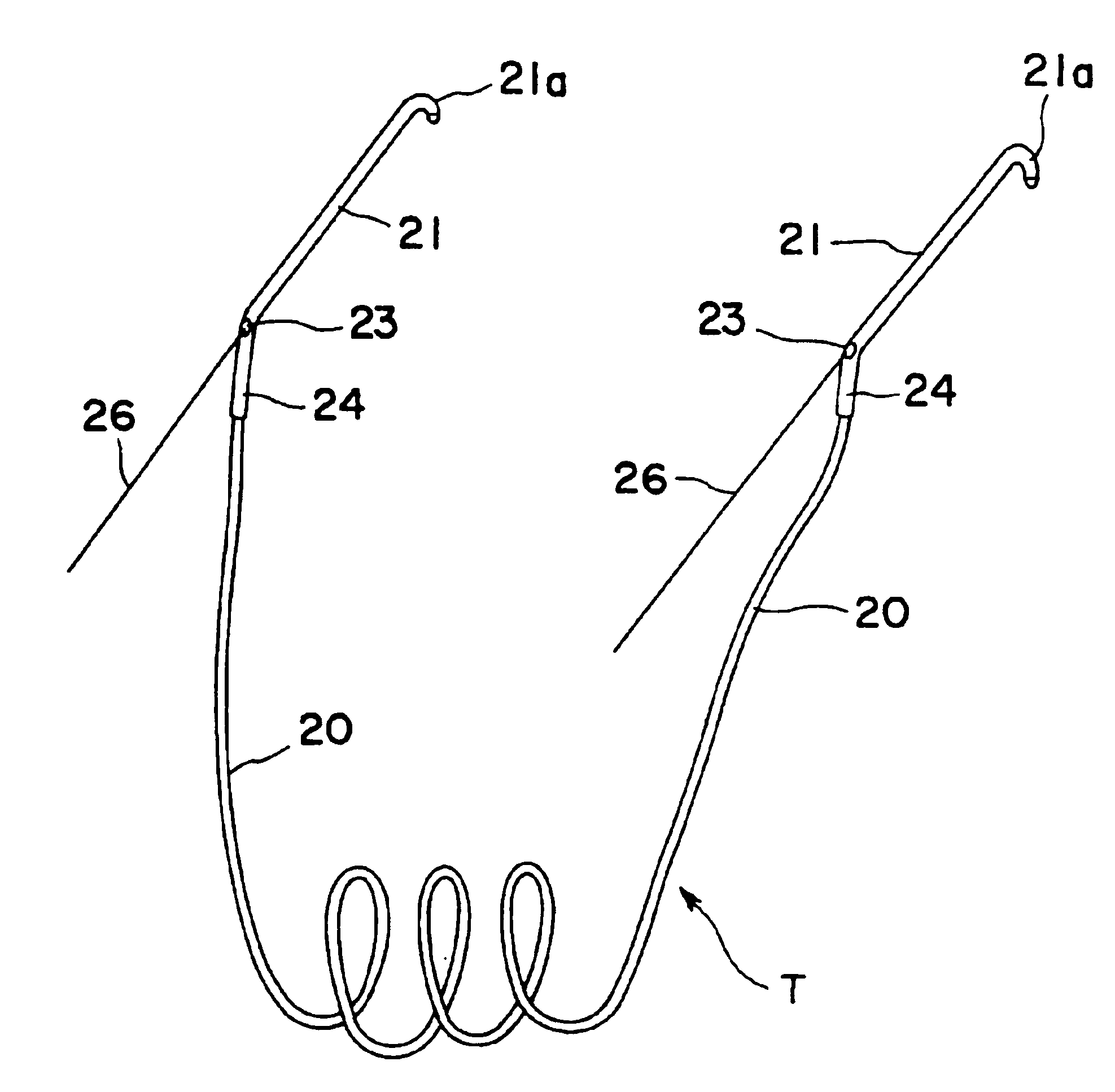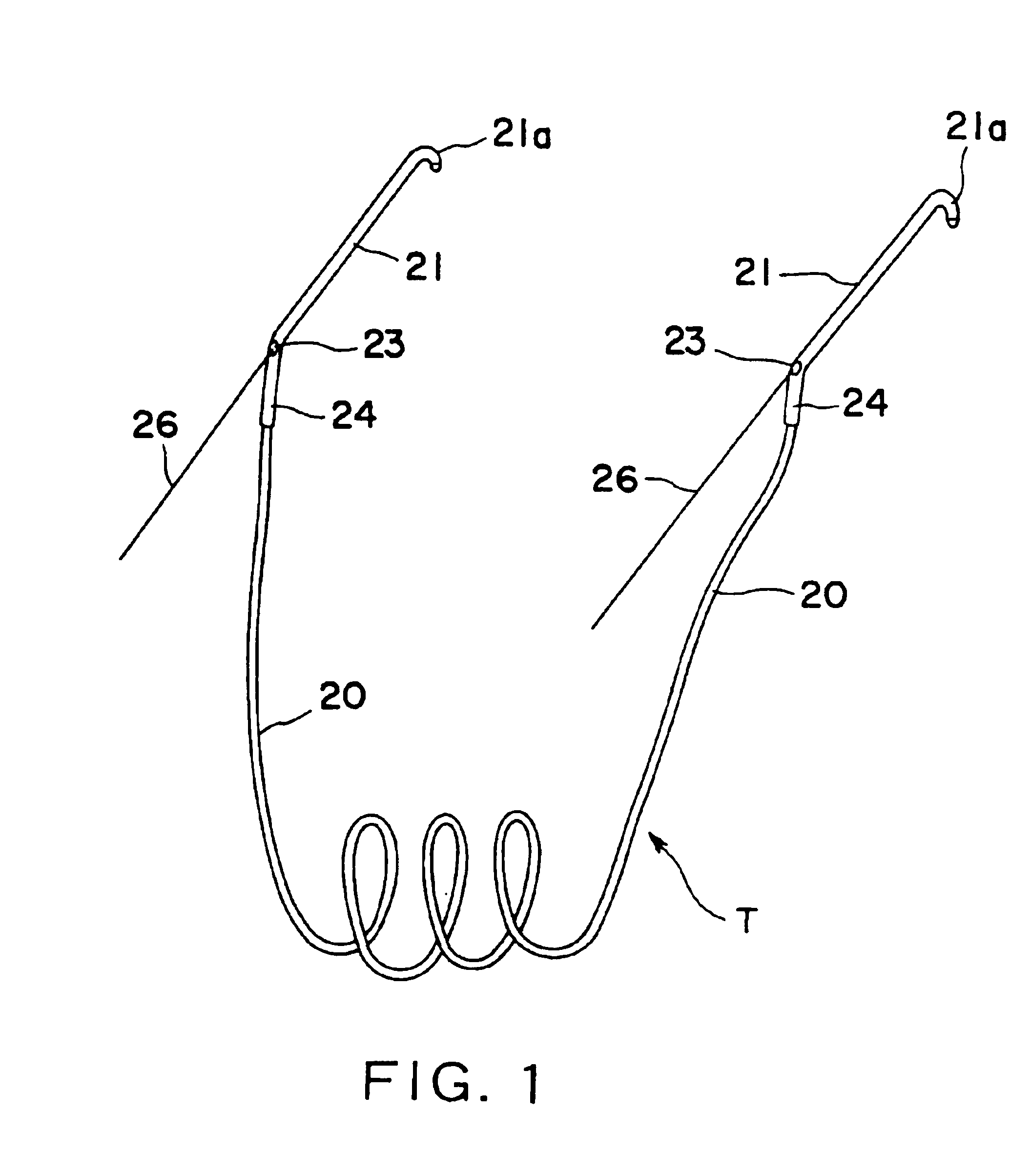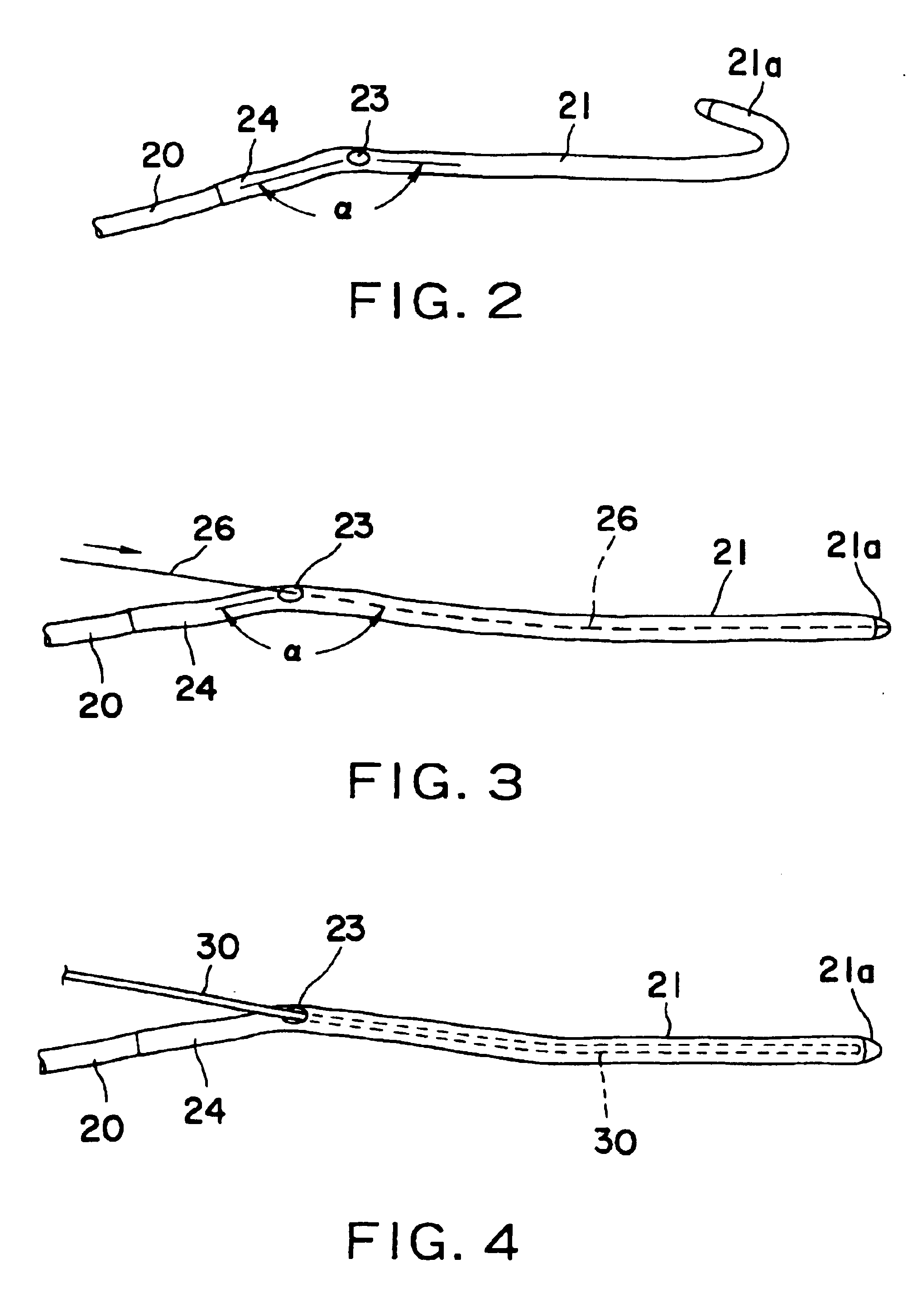Nasolacrimal duct tube used for lacrimal duct reformation operation, and nasolacrimal duct tube instrument
a technology of lacrimal duct reformation and duct tube instrument, which is applied in the field of nasolacrimal stent, can solve the problems of difficult work for the insertion of silicon tube device in the lacrimal passage, large hemorrhage, and insufficient stent siz
- Summary
- Abstract
- Description
- Claims
- Application Information
AI Technical Summary
Benefits of technology
Problems solved by technology
Method used
Image
Examples
Embodiment Construction
A preferred embodiment of the present invention will be described hereinafter.
Referring to FIG. 1, a nasolacrimal stent and a nasolacrimal stent device in a preferred embodiment according to the present invention for lacrimal passage plastic surgery includes a tube T having a detention tube segment 20 and flexible, light-transmitting (transparent or translucent) first and second probe tube segments 21 connected to the opposite ends of the flexible detention tube segment 20, respectively. The flexible detention tube segment 20, similarly to a conventional one, may be formed of silicone. The probe tube segments 21 may be formed of, for example, a polyolefin resin, a polyamide resin, a polyurethane resin or a mixture of some of those resins. Tubes of those resins including polyolefin resins are harder and more excellent in shape retention than silicone tubes, and can be readily inserted in the lacrimal passage. Preferably, the inside diameter of the detention tube segment 20 is, for ex...
PUM
 Login to View More
Login to View More Abstract
Description
Claims
Application Information
 Login to View More
Login to View More - R&D
- Intellectual Property
- Life Sciences
- Materials
- Tech Scout
- Unparalleled Data Quality
- Higher Quality Content
- 60% Fewer Hallucinations
Browse by: Latest US Patents, China's latest patents, Technical Efficacy Thesaurus, Application Domain, Technology Topic, Popular Technical Reports.
© 2025 PatSnap. All rights reserved.Legal|Privacy policy|Modern Slavery Act Transparency Statement|Sitemap|About US| Contact US: help@patsnap.com



